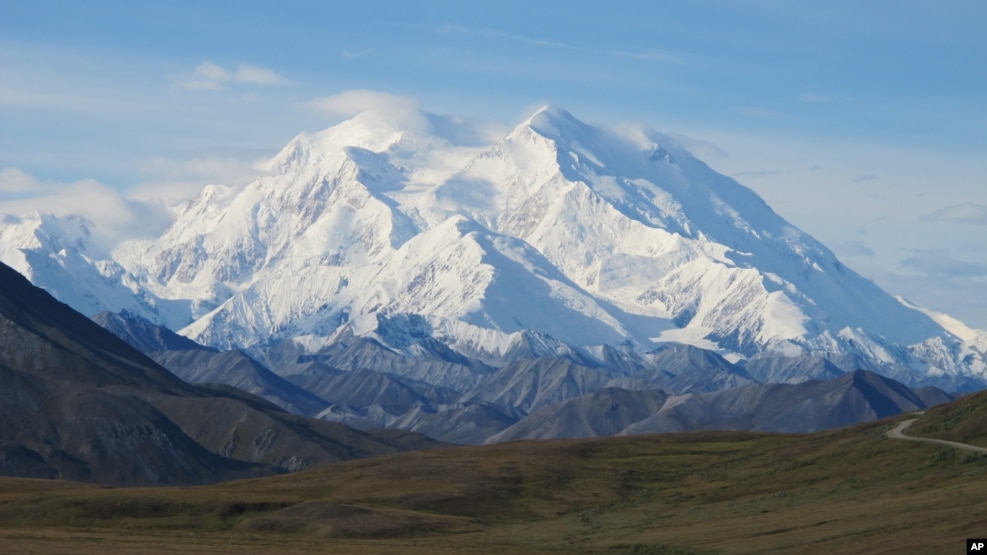
This week on our national parks journey, we travel to the largest state in terms of land area: Alaska.
Alaska is home to more national parks than any other state. It is also home to North America's tallest mountain -- the 6,190-meter high Denali peak.
The peak gives the surrounding protected area its name. Welcome to Denali National Park in central Alaska.
Denali's grounds covers more than 2.4 million hectares. Within the park are glaciers, clear rivers, peaceful forests, and wildlife such as wolves, moose, bears, and sheep.
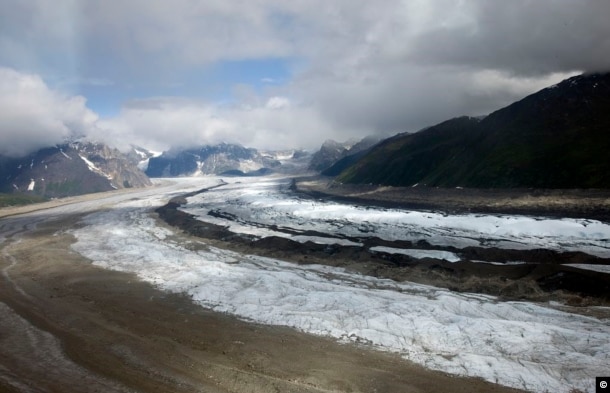
Denali National Park seems huge; yet only one road goes through the park. Hundreds of thousands of visitors travel down that road each year to experience the Alaskan wild.
From Mount McKinley to Denali
Denali National Park was first established almost 100 years ago. At the time, the park and North America's tallest mountain were known by another name. Many Americans knew the famous peak as Mount McKinley.
In the late 1800s, gold miners unofficially named the peak after William McKinley, the 25th U.S. president. At the time, McKinley was still a presidential candidate.
McKinley himself never traveled anywhere near the mountain. But the name stuck.
In Alaska, however, locals continued to call the mountain “Denali.” The word Denali means “the high one” for the Athabascan people, many of whom lived north of the mountain.
The area became a national park on February 26, 1917. Its name was Mount McKinley National Park. Some naturalists disagreed with the naming decision. A debate continued for more than half a century, a sign of the area's long and complex history.
In 1975, Alaskan state officials asked the federal government to change the name to Denali to honor the native Alaskans. But congressional members from the state of Ohio - where McKinley was from - opposed and blocked the renaming efforts.
In late 1980, weeks before his presidency ended, Jimmy Carter increased the size of the park from 800,000 hectares to 2.4 million hectares.
The expanded park also took on a new name. It became the Denali National Park and Preserve.
The naming debate, however, was not over. Although the park took the name of Denali, the mountain itself still remained Mount McKinley for another 35 years.
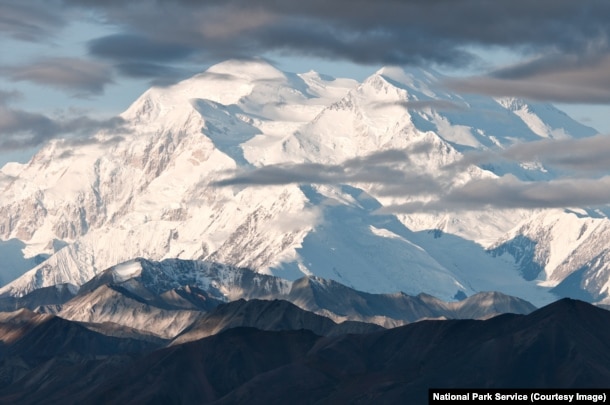
In August 2015, President Barack Obama officially changed mountain's name from Mount McKinley to Denali. The announcement was made shortly before Obama traveled to Alaska.
His visit was aimed at publicizing the effects of climate change in the state. Obama became the first active president to travel north of the Arctic Circle.
U.S. Interior Secretary Sally Jewell said of the name change: "With our own sense of reverence for this place, we are officially renaming the mountain Denali in recognition of the traditions of Alaska Natives and the strong support of the people of Alaska.”
Protecting a unique ecosystem - past and present
The animals living within Denali National Park are just as famous as its tallest peak. In fact, Denali was the first national park created in order to protect wildlife. The park is home to 39 kinds of mammals and over 160 kinds of birds.
Many people come to Denali to see the park's largest mammals. Some moose here weigh well over 500 kilograms. More than 1,700 caribou live within the grounds. Dall sheep flock together on hillsides.
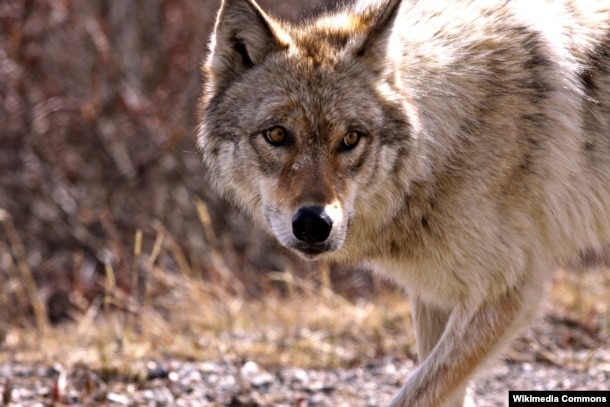
Wolves are everywhere in the park. Denali is known as one of the best places to observe wolves in the wild. Giant grizzly bears also can be seen. They enjoy catching salmon and eating wild berries in the summer.
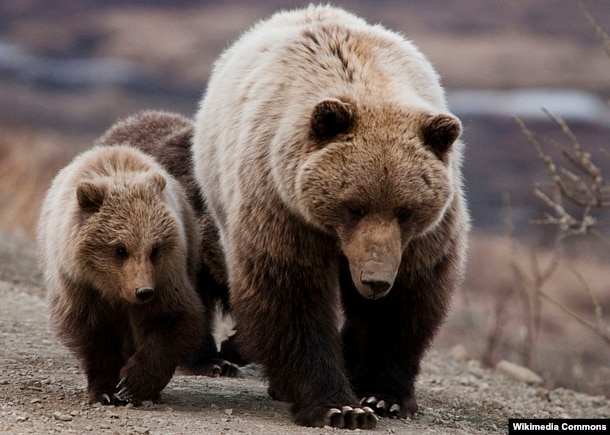
Denali also protects the remains of a prehistoric ecosystem.
In 2005, geologists discovered fossilized evidence of dinosaur tracks within Denali. Tests showed the fossil to be about 70 million years. It was the first sign of dinosaurs in central Alaska.
Since then, scientists have discovered more than 300 fossil sites. The fossils preserve evidence of other ancient creatures and many kinds of plants.
With each discovery, a more complete picture of Denali's past comes to life.
A long history of mountaineering
Adventure-seeking travelers visit Denali to climb North America's tallest peak.
The first successful climb to the very top happened on June 7, 1913, when four men reached the summit. Every year, more than 1,000 people try to reach Denali's summit. Only about half of them succeed.
Climbing Denali is extremely difficult. Climbers face harsh conditions and extreme weather. Winds can blow at speeds of more than 160 kilometers an hour. They must use special equipment to travel along glacier ice and difficult terrain.
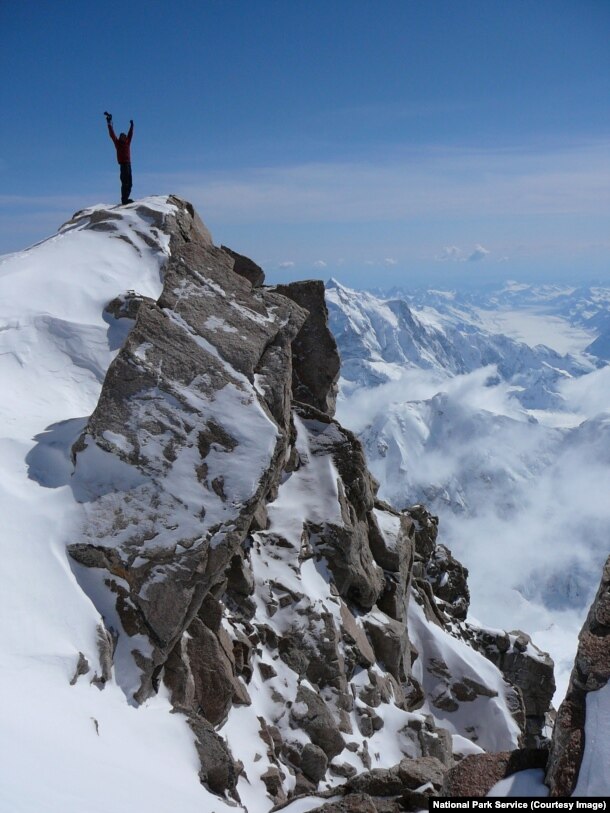
The Kahiltna Glacier is the longest glacier here. Climbers know it as the starting point for 'summiting' Denali. It sees some of the most extreme temperatures of any place on Earth.
Most successful climbs take about three weeks. Several local businesses offer group climbs.
Enjoying Denali
Visitors can enjoy Denali in more restful ways, too. Many people travel by bus along the park's single road. Travel companies offer half-day bus tours.
Others choose to ride bicycles along the long road. This gives them a chance to get up close to Denali's wildlife and peaceful environment.
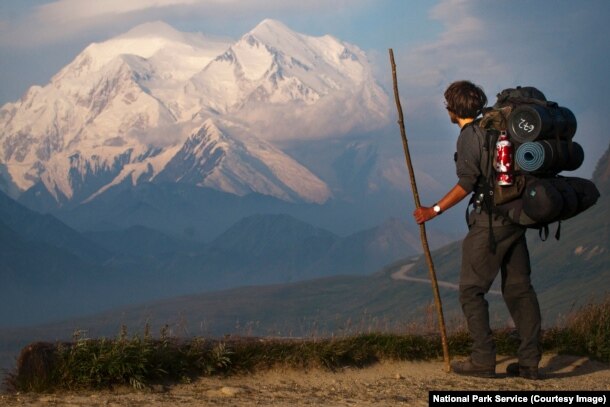
The park operates six campsites and offers several kilometers of trails.
Denali is also home to a group of sled dogs. These Alaskan huskies are an important part of the park experience.
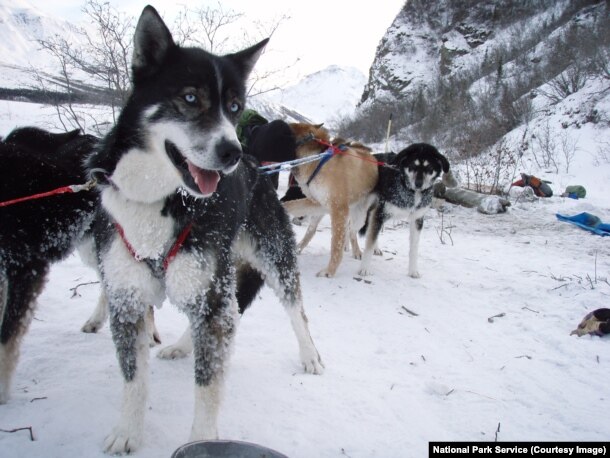
Visitors can watch sled dog demonstrations in the summer to learn about this traditional Alaskan way of travel.
Celebrating 100 years
As the National Park Service celebrates its 100th anniversary this year, Denali National Park is preparing to mark its 100th anniversary next February. The park's past, present and future connect many different cultures and people across time.
I'm Ashley Thompson.
And I'm Dorothy Gundy.
Ashley Thompson adapted this report with materials from the National Park Service. George Grow was the editor.
Words in This Story
journey - n. an act of traveling from one place to another
peak - n. the pointed top of a mountain
glacier - n. a very large area of ice that moves slowly down a slope or valley or over a wide area of land
reverence - n. honor or respect that is felt for or shown to (someone or something)
ecosystem - n. everything that exists in a particular environment
flock - v. to gather or move in a crowd
mammal - n. a type of animal that feeds milk to its young and that usually has hair or fur covering most of its skin
fossil - n. something (such as a leaf, skeleton, or footprint) that is from a plant or animal which lived in ancient times and that you can see in some rocks
summit - n. the highest point of a mountain
harsh - adj. unpleasant and difficult to accept or experience
terrain - n. land of a particular kind
tour - n. an activity in which you go through a place (such as a building or city) in order to see and learn about the different parts of it
trail - n. a path through a forest, field, etc.

